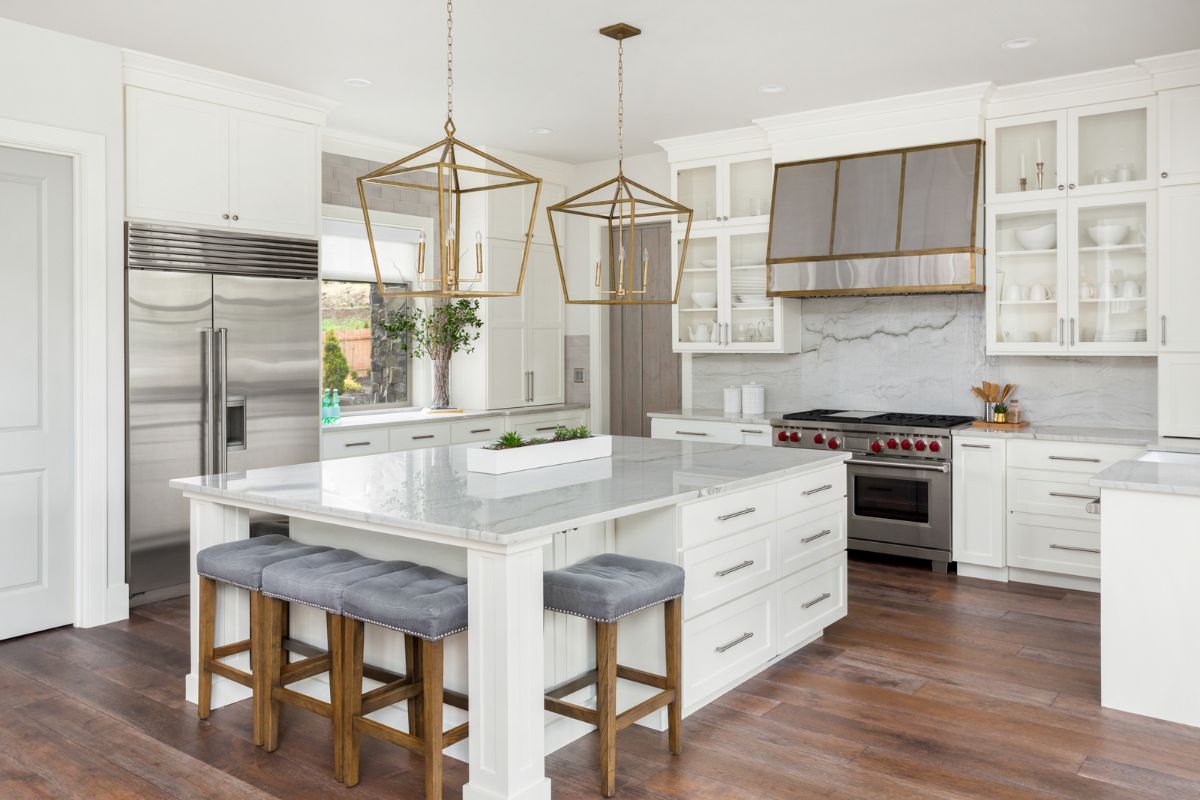The gap between your stove and cabinet might seem like a minor detail, but it can cause big problems if left unaddressed. From collecting dirt and debris to posing fire hazards, this small space can disrupt your kitchen’s functionality and aesthetics. Fortunately, there are several effective ways to fill this gap, making your kitchen safer, cleaner, and more visually appealing. In this guide, we’ll explore practical solutions, share expert tips, and provide step-by-step instructions to help you tackle this common kitchen issue.
Why the Gap Between Your Stove and Cabinet Matters
Before diving into solutions, it’s important to understand why this gap exists and the problems it can create.
Why Does the Gap Exist?
- Standard Kitchen Design: Most kitchens have a small gap between the stove and cabinets to accommodate variations in stove sizes and ensure proper ventilation.
- Cleaning Access: The gap allows for easier cleaning and maintenance of the stove and surrounding areas.
- Safety Considerations: A gap helps prevent heat from the stove from directly affecting the cabinet, reducing the risk of fire.
Problems Associated with the Gap
- Dirt and Debris Accumulation: Food particles, grease, and dust can collect in the gap, making it difficult to clean.
- Fire Hazards: Grease buildup in the gap can become flammable, posing a serious safety risk.
- Aesthetic Concerns: The gap can make your kitchen look unfinished or unpolished.
Solutions to Fill the Gap
Here are some of the most effective ways to fill the gap between your stove and cabinet:
1. Silicone Gap Covers
Silicone gap covers are flexible, heat-resistant strips that fit snugly into the space between your stove and cabinet. They’re easy to install and come in various colors to match your kitchen decor.
How to Install Silicone Gap Covers:
- Measure the Gap: Use a measuring tape to determine the width of the gap.
- Trim the Cover: Cut the silicone cover to the appropriate length using scissors or a utility knife.
- Install the Cover: Slide the silicone cover into the gap. It should fit securely without gaps.
- Clean Regularly: Remove the cover periodically to clean any debris or grease buildup.
Pro Tip: Choose a food-grade silicone cover for added safety and durability.
2. Custom-Made Fillers
For a more polished look, consider custom-made fillers. These are pieces of wood, plastic, or metal cut to fit the exact dimensions of your gap.
How to Install Custom-Made Fillers:
- Measure the Gap: Measure the width and height of the gap accurately.
- Choose Your Material: Select wood, plastic, or metal based on your kitchen’s style.
- Cut the Filler: Cut the material to match your measurements.
- Attach the Filler: Use adhesive or screws to secure the filler in place.
- Finish the Filler: Sand the edges and paint or stain the filler to match your kitchen decor.
Pro Tip: If you’re not confident in your DIY skills, consult a professional for custom-made solutions.
3. Magnetic Heat-Resistant Sheets
Magnetic heat-resistant sheets are a convenient and removable solution. They provide a barrier between the stove and cabinet, reducing heat damage and grease buildup.
How to Install Magnetic Sheets:
- Measure and Trim: Measure the gap and trim the magnetic sheet to fit.
- Attach the Sheet: Place the magnetic sheet on the side of your stove facing the gap. It will adhere securely without adhesive.
- Clean as Needed: Remove the sheet periodically to clean any grease or debris.
Pro Tip: Magnetic sheets are ideal for renters or those who prefer a non-permanent solution.
4. Self-Adhesive Strips or Foam Tape
Self-adhesive strips or foam tape are a quick and budget-friendly option. They’re easy to install and can be replaced as needed.
How to Install Self-Adhesive Strips:
- Clean the Gap: Thoroughly clean the gap to ensure proper adhesion.
- Measure and Cut: Measure the gap and cut the strips or tape to fit.
- Apply the Strips: Peel off the backing and press the strips into place.
- Smooth and Seal: Use your fingers or a flat tool to smooth the strips and create a seal.
Pro Tip: Choose heat-resistant strips for added safety.
5. Custom Wood or Metal Trim
For a more permanent and tailored solution, consider custom wood or metal trim. This option allows you to match the trim with your cabinet’s design.
How to Install Custom Trim:
- Measure the Gap: Measure the width and height of the gap.
- Cut the Trim: Use a saw or metal shears to cut the trim to size.
- Secure the Trim: Attach the trim to the cabinet and stove using screws or adhesive.
- Finish the Trim: Sand the edges and paint or stain the trim to match your kitchen decor.
Pro Tip: Custom trim adds a high-end, polished look to your kitchen.
Why Is Filling the Gap Important?
Filling the gap between your stove and cabinet isn’t just about aesthetics—it’s also about safety and functionality.
Safety Hazards
- Fire Risk: Grease and food particles in the gap can ignite when exposed to high heat.
- Tripping Hazard: A gap can create a tripping hazard, especially for children or elderly family members.
Cleanliness and Hygiene
- Pest Infestation: Crumbs and debris can attract pests like ants and cockroaches.
- Hard-to-Clean: The narrow gap can be difficult to clean, leading to grime and mold buildup.
Aesthetic Concerns
- Unsightly Gap: An exposed gap can disrupt the visual flow of your kitchen.
- Dust Accumulation: Dust and dirt can settle in the gap, making your kitchen look unkempt.
Expert Tips for Filling the Gap
Here’s what experts recommend for addressing the gap between your stove and cabinet:
- Choose Heat-Resistant Materials: Ensure the materials you use can withstand high temperatures.
- Match Your Kitchen’s Style: Select solutions that complement your kitchen’s design and color scheme.
- Prioritize Safety: Opt for solutions that reduce fire hazards and improve kitchen safety.
- Keep It Clean: Regularly clean the gap or the filler to prevent dirt and grease buildup.
Personal Anecdote: My Experience with Silicone Gap Covers
When I moved into my current home, I noticed a significant gap between my stove and cabinet. It quickly became a magnet for crumbs and grease, and I dreaded cleaning it. After some research, I decided to try silicone gap covers. The installation was quick and easy, and the covers blended seamlessly with my kitchen decor. Not only did they solve my cleaning woes, but they also gave my kitchen a more polished look. It’s amazing how such a small change can make a big difference!
Final Thoughts
Filling the gap between your stove and cabinet is a simple yet impactful way to improve your kitchen’s safety, cleanliness, and aesthetics. Whether you choose silicone gap covers, custom-made fillers, or magnetic sheets, there’s a solution to suit every kitchen and budget.
By addressing this often-overlooked area, you can create a more functional and visually appealing kitchen. So, roll up your sleeves, pick a solution, and start transforming your kitchen today!



